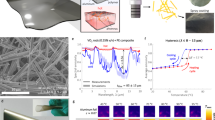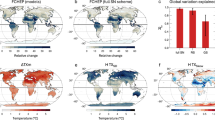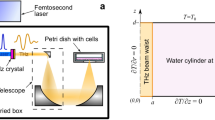Abstract
THE discovery in Cen XR-2 of a high temperature component with a decreasing intensity1,2 may be consistent with the proposed nova-like model of Chodil et al.3 discussed earlier by Manley4. It may have arisen as the shock from the nova expanded into a circumstellar medium of radially decreasing density. It is well known5–7 that a shock expanding into a medium with a sufficiently fast decreasing density may accelerate, so that the temperature of the shock-heated medium will increase with distance. Thus for a shock propagating into an exponential atmosphere  with T(T0) the temperature at the density ρ(ρ0)
with T(T0) the temperature at the density ρ(ρ0)  ρ is a numerical factor between 1 and 1.5 and γ is the adiabatic index. For a density decreasing radially according to a power law, the corresponding temperature behaviour is
ρ is a numerical factor between 1 and 1.5 and γ is the adiabatic index. For a density decreasing radially according to a power law, the corresponding temperature behaviour is  where T(T0) is the temperature immediately behind the shock front at R(R0) and the density ρ∼R−ω. (Note that ω > 3 for it to be interesting in this context.) By evaluating the integral which governs the volume emissivity at the frequency ν of a hot plasma with a radially varying temperature,
where T(T0) is the temperature immediately behind the shock front at R(R0) and the density ρ∼R−ω. (Note that ω > 3 for it to be interesting in this context.) By evaluating the integral which governs the volume emissivity at the frequency ν of a hot plasma with a radially varying temperature,  In the limit hν > >kT0 for either circumstellar density model, it is found that the spectral index (∼ 1.2) found by Lewin et al.1 is far too small to be consistent with these simple considerations.
In the limit hν > >kT0 for either circumstellar density model, it is found that the spectral index (∼ 1.2) found by Lewin et al.1 is far too small to be consistent with these simple considerations.
This is a preview of subscription content, access via your institution
Access options
Subscribe to this journal
Receive 51 print issues and online access
$199.00 per year
only $3.90 per issue
Buy this article
- Purchase on SpringerLink
- Instant access to full article PDF
Prices may be subject to local taxes which are calculated during checkout
Similar content being viewed by others
References
Lewin, W. H. G., Clark, G. W., and Smith, W. B., Ap. J., 152, L49 (1968).
Lewin, W. H. G., Clark, G. W., and Smith, W. B., Nature, (preceding communication).
Chodil, G., Mark, H., Rodrigues, R., and Swift, C. D., Ap. J., 152, L45 (1968).
Manely, O. P., Phys. Rev. Lett., 19, 1144 (1967).
Chisnell, R. E., Proc. Roy. Soc., A, 232, 350 (1955).
Rogers, M. H., Ap. J., 125, 478 (1957).
Grover, R., and Hardy, J. W., Lawrence Radiat. Lab. Rep. UCRL-7980T, Livermore, Cal. (1964).
Francey, R. J., Fenton, A. G., Harries, J. R., and McCracken, K. G., Nature, 216, 773 (1967).
Author information
Authors and Affiliations
Rights and permissions
About this article
Cite this article
MANLEY, O. High Temperature Component of Cen XR-2. Nature 219, 1236–1237 (1968). https://doi.org/10.1038/2191236a0
Received:
Issue date:
DOI: https://doi.org/10.1038/2191236a0



